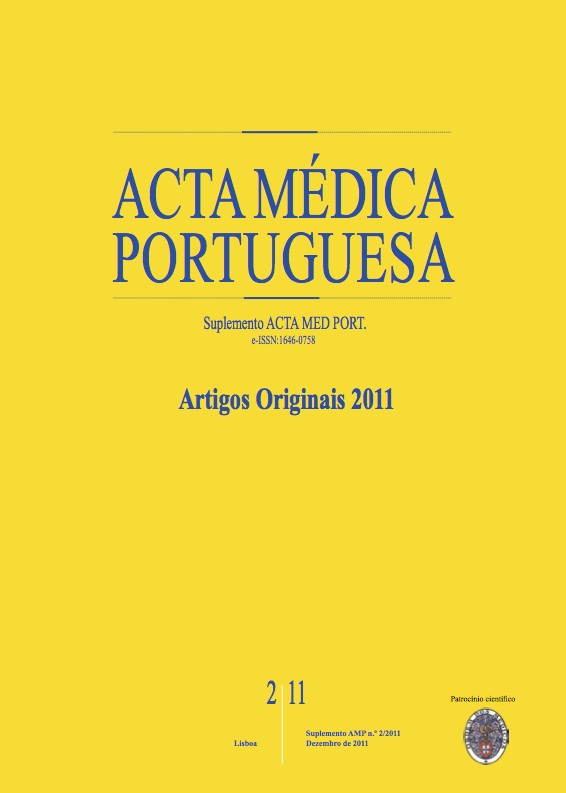Escherichia coli bacteraemia in a pediatric emergency service (1995-2010).
DOI:
https://doi.org/10.20344/amp.1508Abstract
Some authors reported an increase in relative incidence of E. coli bacteraemia in recent years. E. coli has been the third most frequently isolated bacteria in blood cultures at our emergency service between 1995 and 2009.To analyse trends, clinical, laboratory and microbiological data of E. coli bacteraemia in a level 3 pediatric hospital, in the last 16 years.Retrospective analysis of cases with positive blood cultures for E. coli between 1995-2010. Nosocomial infections were excluded.E. coli was identified in 32 children (19 boys); 15 cases (47%) were diagnosed in the second half of the study. The median age was 1,5 months: 13 (41%) were neonates, 23 (72%) were less than three months of age and 29 (91%) were less than 12 months. Fever was the most common symptom, present in 29 children (91%). In the neonatal period the median leukocyte count was 12,2 x 103/mL and median C reactive protein was 13 mg/dL. Beyond the first month of age, the median leukocyte count was 16,7 x 103/mL and median C reactive protein was 10 mg/dL. The diagnosis were: acute pyelonephritis (57%), sepsis (13%), urosepsis and meningitis (9% each), occult bacteremia (6%), cholangitis and appendicitis (3% each). Eight of 21 acute pyelonephritis were diagnosed in the neonatal period. One child died (sepsis) and two had brain abscesses after meningitis. Resistances were: 24% to ampicillin, 12% to amoxicillin+clavulanate, 18% to cefalotin, 0% to cefotaxime and aminoglycosides. Resistances were higher in the neonatal period.We did not see an increase of community-acquired E. coli bacteraemia over the last 16 years in our hospital. Infections occurred mainly in the neonatal period and first three months of life and the most frequent diagnosis was acute pyelonephritis. Leukocytosis is not always present, particularly in the neonatal period. A quarter of the E. coli was resistant to ampicillin. The outcome was favorable in most children and one died of sepsis.Downloads
Downloads
How to Cite
Issue
Section
License
All the articles published in the AMP are open access and comply with the requirements of funding agencies or academic institutions. The AMP is governed by the terms of the Creative Commons ‘Attribution – Non-Commercial Use - (CC-BY-NC)’ license, regarding the use by third parties.
It is the author’s responsibility to obtain approval for the reproduction of figures, tables, etc. from other publications.
Upon acceptance of an article for publication, the authors will be asked to complete the ICMJE “Copyright Liability and Copyright Sharing Statement “(http://www.actamedicaportuguesa.com/info/AMP-NormasPublicacao.pdf) and the “Declaration of Potential Conflicts of Interest” (http:// www.icmje.org/conflicts-of-interest). An e-mail will be sent to the corresponding author to acknowledge receipt of the manuscript.
After publication, the authors are authorised to make their articles available in repositories of their institutions of origin, as long as they always mention where they were published and according to the Creative Commons license.









